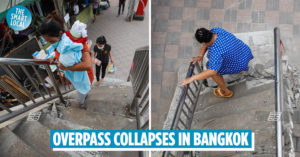A guide to Wat Arun
Wat Arun or the Temple of Dawn has attracted many visitors, both Thais and foreigners alike.
Considering the temple’s unique architectural design, it’s not a surprise that it’s seen as one of the most stunning temples in Thailand. In the evening, a spotlight shines on the spires from the temple grounds, illuminating the temple in romantic hues.
Thus, visiting one of Thailand’s prominent landmarks needs to be added to your post-covid bucket list.
Visiting Wat Arun
Commonly called Wat Jaeng by locals, the temple is situated on the west bank of the Chaophraya River. There are three levels to the main prang, which translates to ‘spire’, all connected by a staircase decorated with ornaments. It is a little bit of a lengthy climb but it’s certainly worth it.
It’s important to note that like all temples in Thailand, Wat Arun has a dress code: visitors are required to wear shirts with sleeves and bottoms that cover their knees. The dress protocol is enforced in accordance with Buddhist teachings of ‘respectful’ attire on sacred grounds – because not everyone is ready-dressed for this, most of Thailand’s temples offer shawls for women to cover their shoulders.
The 3-tiered spires of the Temple of Dawn
Built during the reign of King Rama III, a king who favored Chinese-style decor, the sspires and buildings at Wat Arun are ornamented with pieces of Chinese porcelain, shells, and Chinese statues.
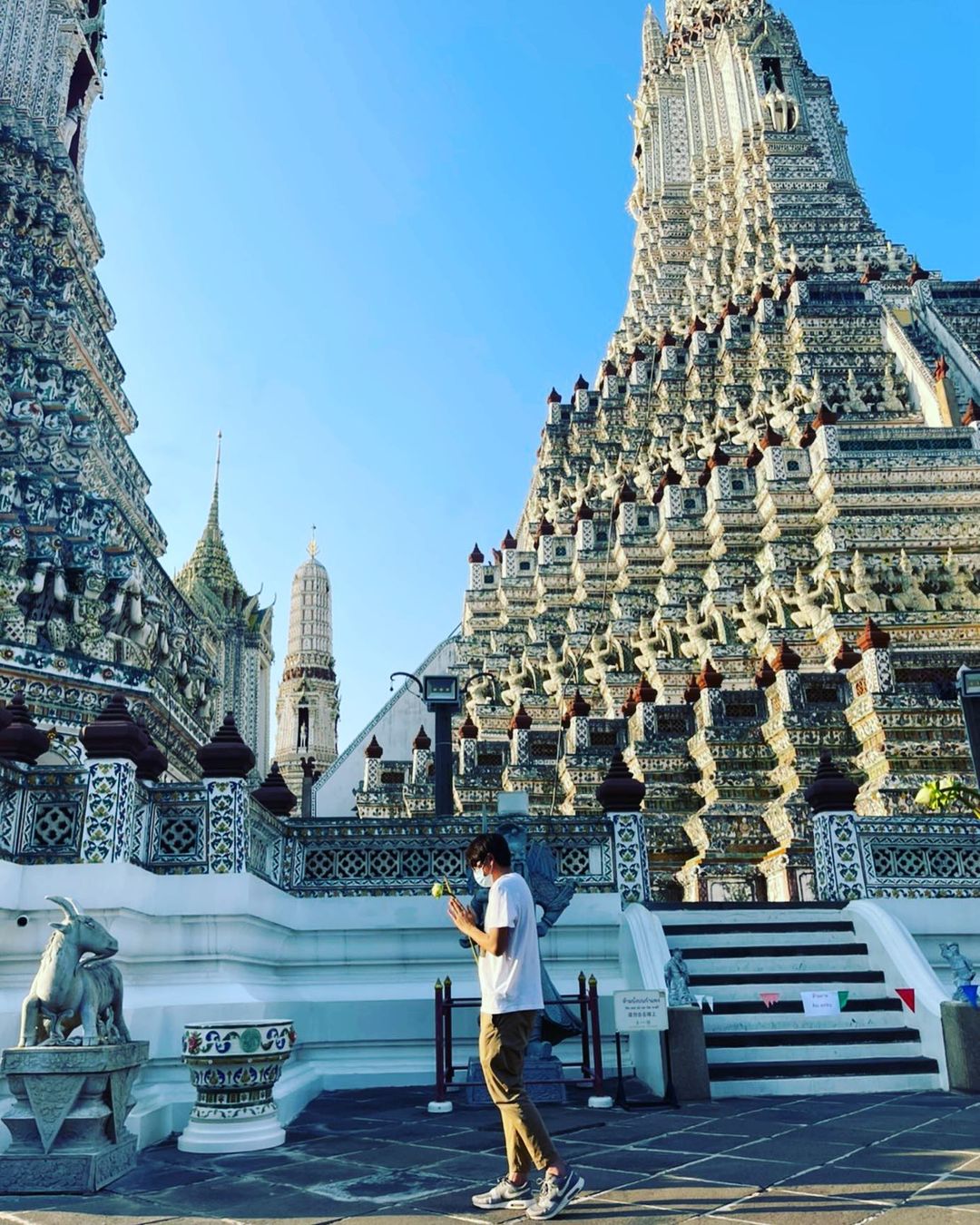 Image credit: @mainy1330
Image credit: @mainy1330
The stairway to the steep spires are divided into 3 levels, which represent the physical and spiritual realms in Buddhist and Hindu cosmology.
As the uppermost level is reserved for deities, visitors can only access the first and second level of Wat Arun’s spires. The staircase’s vibrant adornments made of porcelain glitter against the temple’s otherwise minimal colouring.
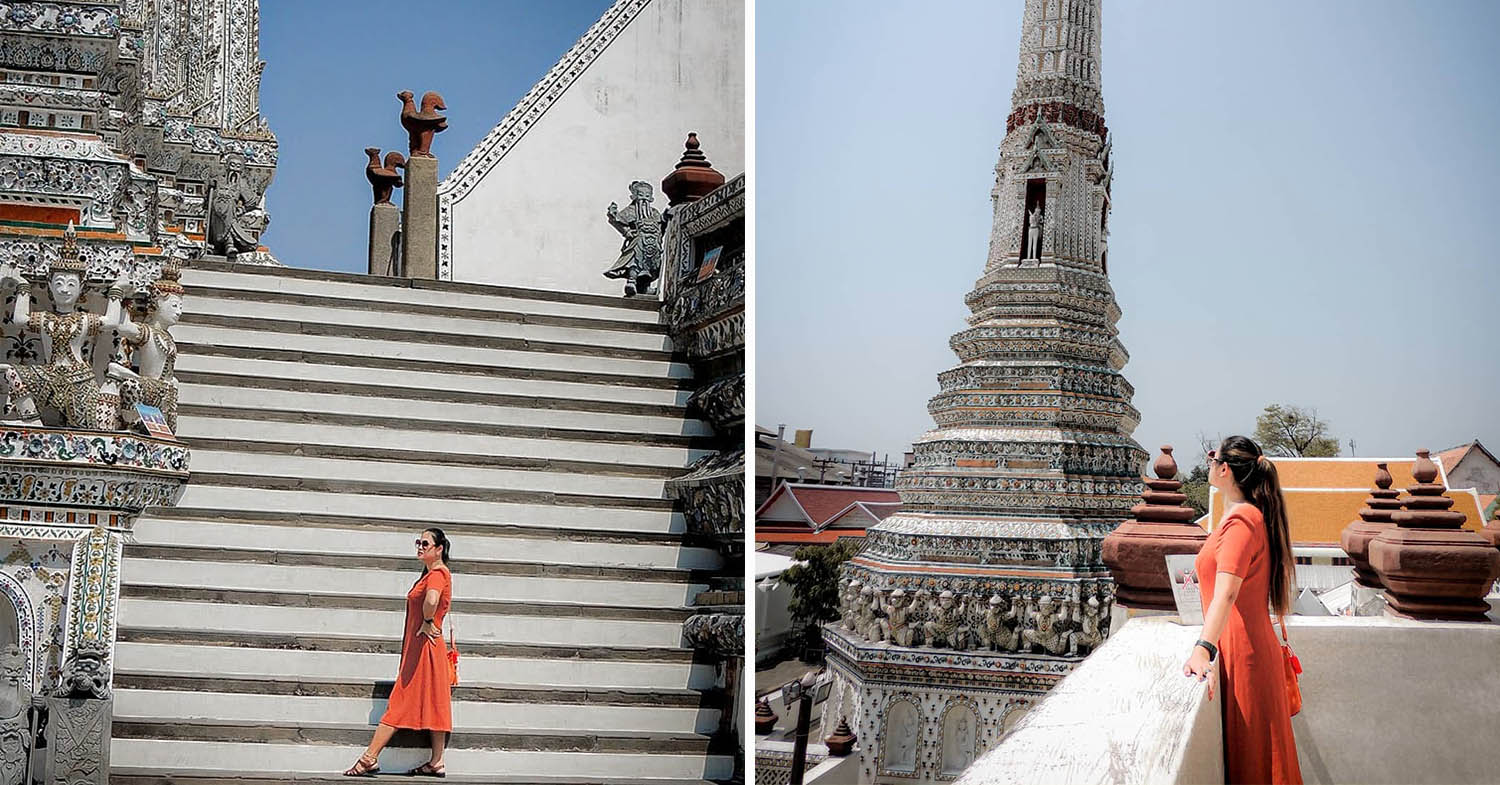 Second level represents the four small spires that are placed around the central prang – this represents North, East, West and South in the physical universe.
Second level represents the four small spires that are placed around the central prang – this represents North, East, West and South in the physical universe.
Image credit: @lookkade_raisin
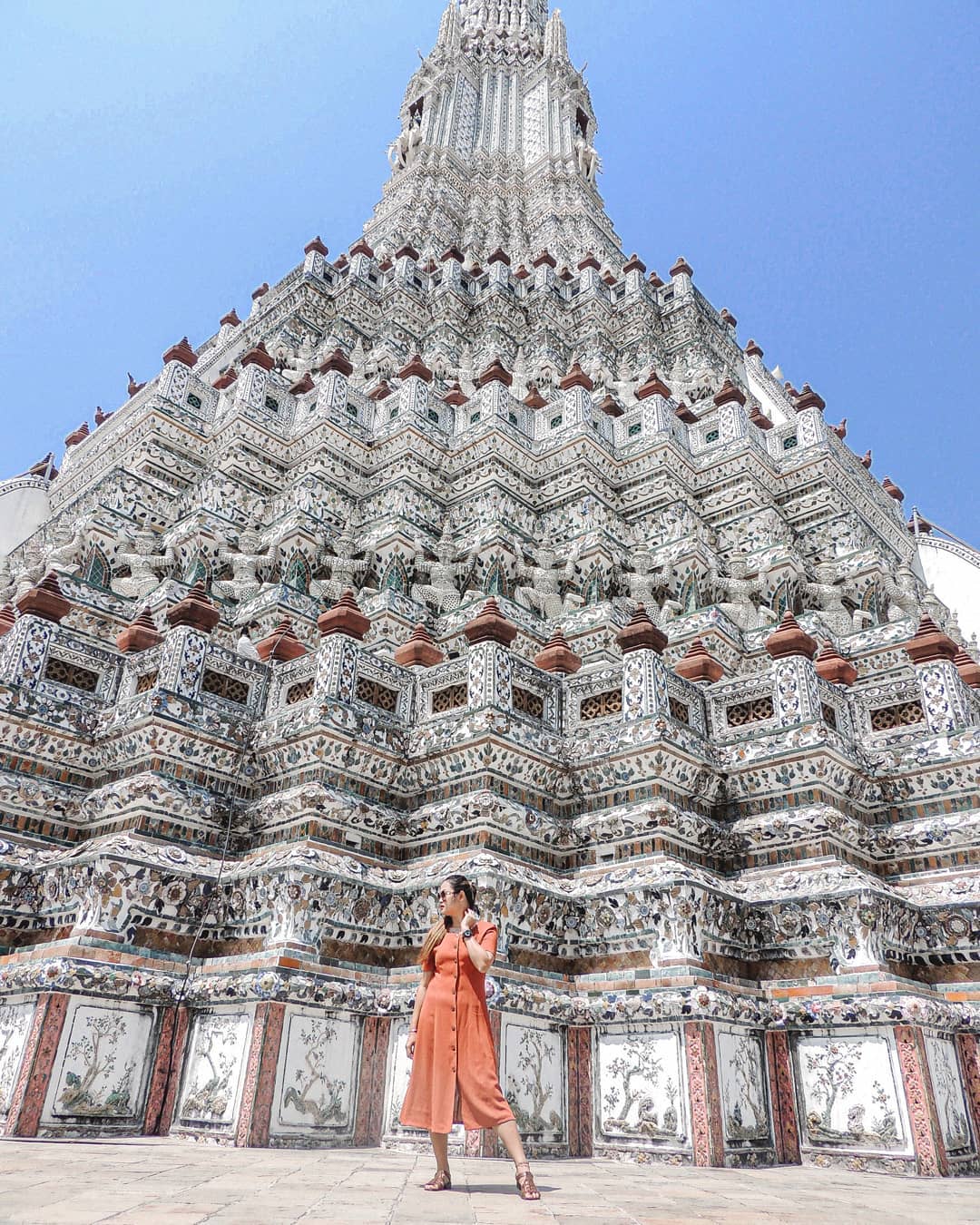 The Central Prang represents Mount Meru, which is the sacred centre of all spiritual and physical universes from the Hindu cosmology.
The Central Prang represents Mount Meru, which is the sacred centre of all spiritual and physical universes from the Hindu cosmology.
Image credit: @lookade_raisin
The towering central prang was decorated to glimmer in the sunshine, sunset and at dawn.
 Image credit: @ju_st_diaries
Image credit: @ju_st_diaries
 The spot light that shimmers on the grand historical infrastructure. Visitors are welcome to roam the temple grounds in the evening, but the upper floors of the spire and the Ordination Hall are closed.
The spot light that shimmers on the grand historical infrastructure. Visitors are welcome to roam the temple grounds in the evening, but the upper floors of the spire and the Ordination Hall are closed.
Image credit: @ronboidyaphotography
The Ordination Hall at Wat Arun
 Image credit: @thewanderer_th
Image credit: @thewanderer_th
The two giants – or yak – that guard the entrance of sacred Ordination Hall, which is ubosot in Thai. Similar to the spires, the gateway is also decorated with shards of Chinese porcelain.
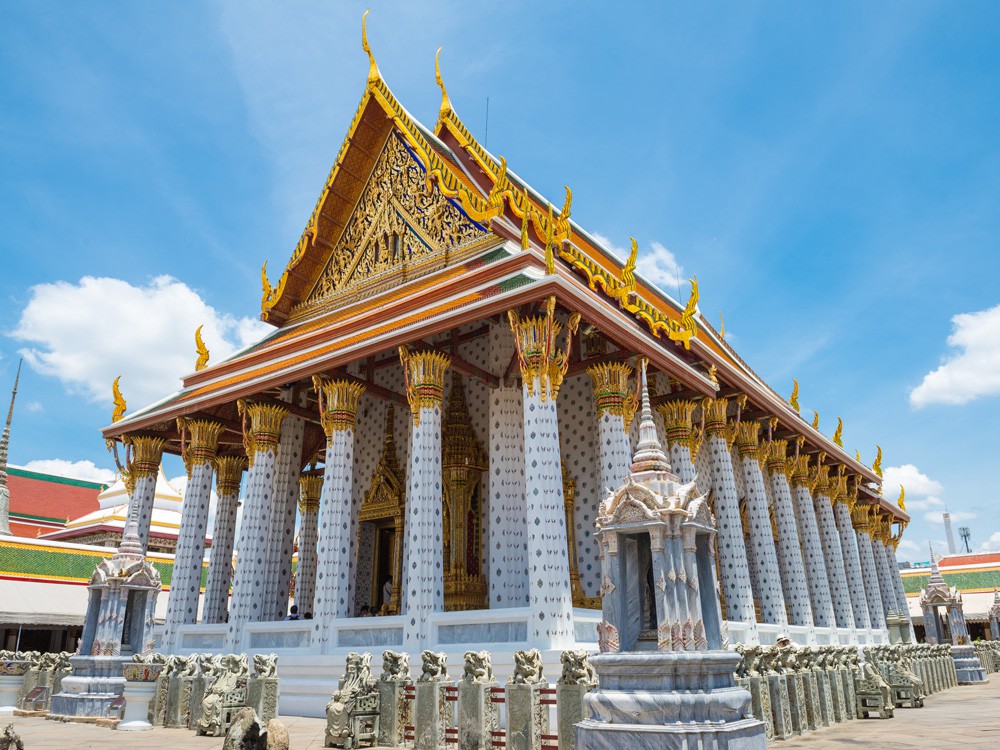 Image credit: Wat Arun 1
Image credit: Wat Arun 1
Busts of Chinese-style lion statues surround the sacred Ordination Hall – its pillars have intricate hand-painted flowers on them.
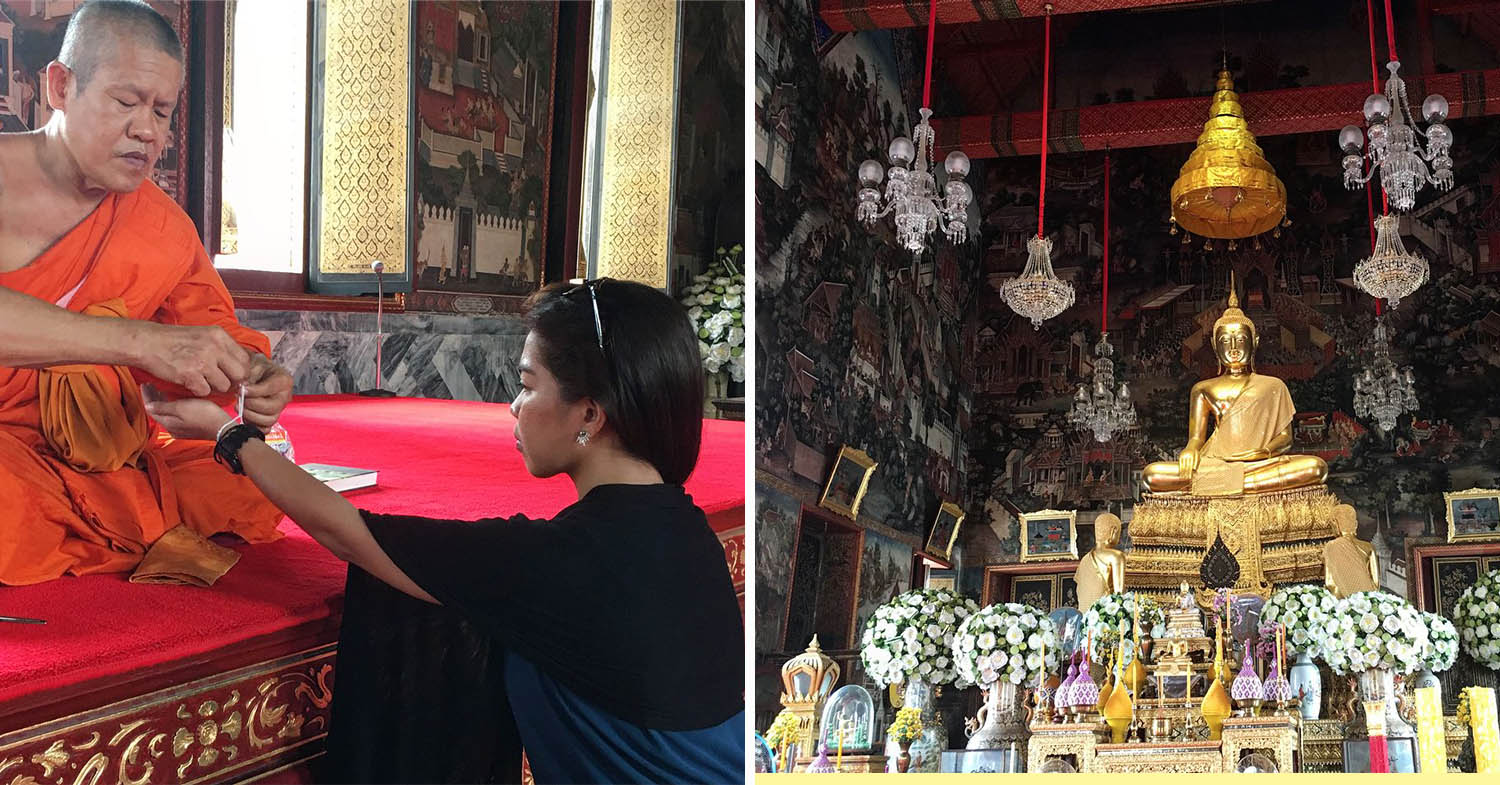 Buddhist rituals inside the Ordination Hall
Buddhist rituals inside the Ordination Hall
Image credit: @ironessa
 Image credit: Best Price Travel
Image credit: Best Price Travel
Once you visit the ordination hall, it’s important not to walk past the locals and talk whilst they’re worshipping inside because it’s a form of local respect.
 Image credit:@g.xydias
Image credit:@g.xydias
Surrounding the ordination hall, there’s a Buddha Gallery or Rabiang Khot that houses over twenty buddha statues – it is respectful to avoid touching the statues.
Crossing the Chaophraya River

Image credit: Culture Trip
The stunning landmark is accessible through ferry rides from the Tha Thien Pier, which is the closest pier from the Grand Palace – the boat operates daily from 8AM – 5.30PM.
Wat Arun is one of those craftsman works and iconic monuments that shouldn’t be missed whilst you’re planning to travel to Thailand.
Wat Arun (Wat Arun Ratchawararam Ratchawaramahawihan)
Address: 158 Thanon Wang Doem, Wat Arun, Bangkok Yai, Bangkok 10600
Opening Hours: 8AM – 6PM, Daily
Nearest Train Station: MRT Itsaraphap
Telephone: +66 2 891 2185
Admission: Thais (Free), Non-Thais ฿100 (~USD3.30)
Wat Arun website
A list of must-do’s in Thailand once Covid-19 is over:
- Krabi’s Ao Thalane is a hidden lagoon
- ICONSIAM has the biggest Starbucks in Thailand
- This Flower Cafe has luxurious Thai desserts on gold platters
Cover images adapted from (Clockwise from Left): @hide.fks, @tak_photograph, @ansnhnmy
Enjoying The Smart Local Thailand? Follow us on Facebook and Instagram for more stories like this.

Drop us your email so you won't miss the latest news.
